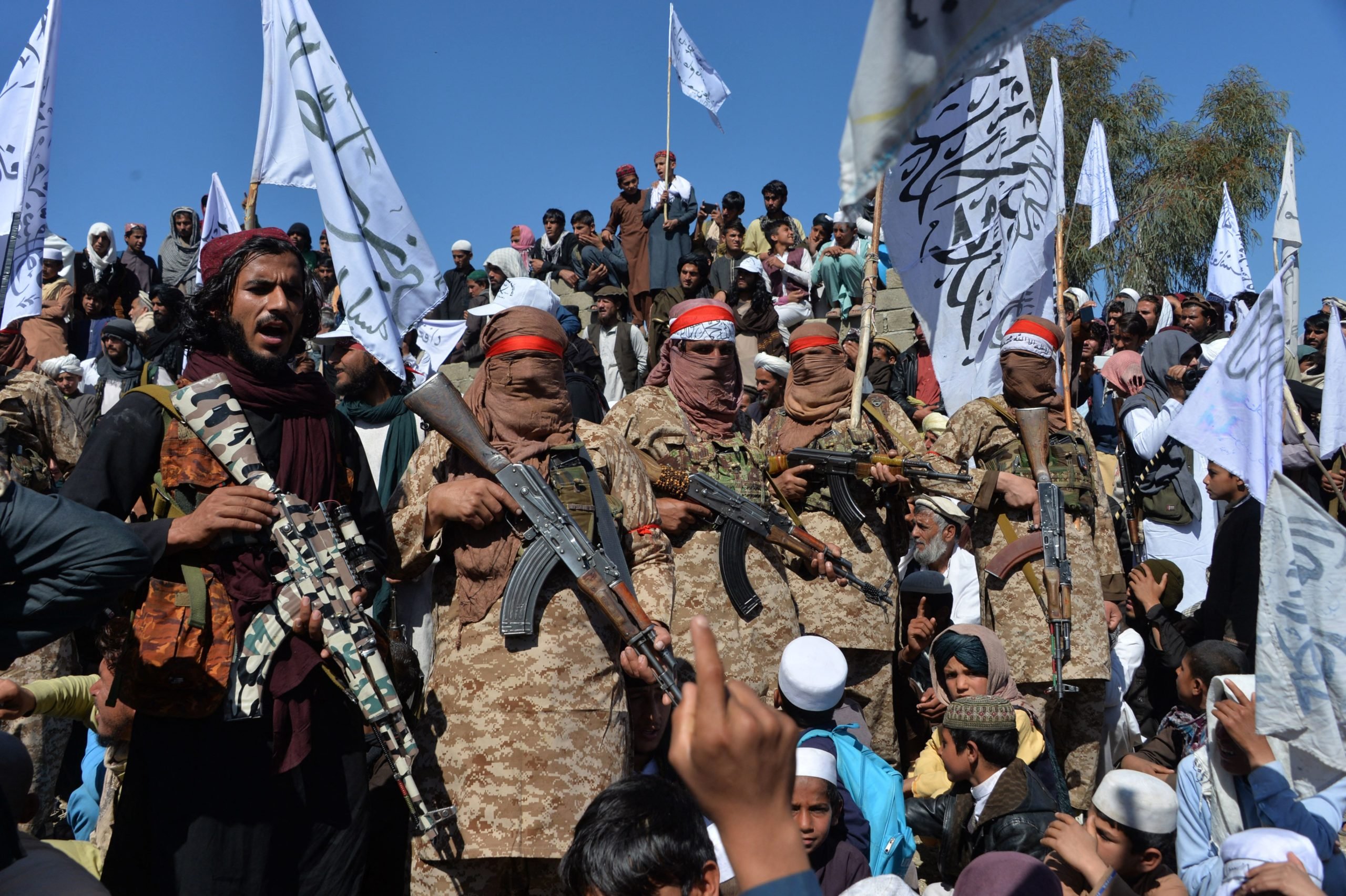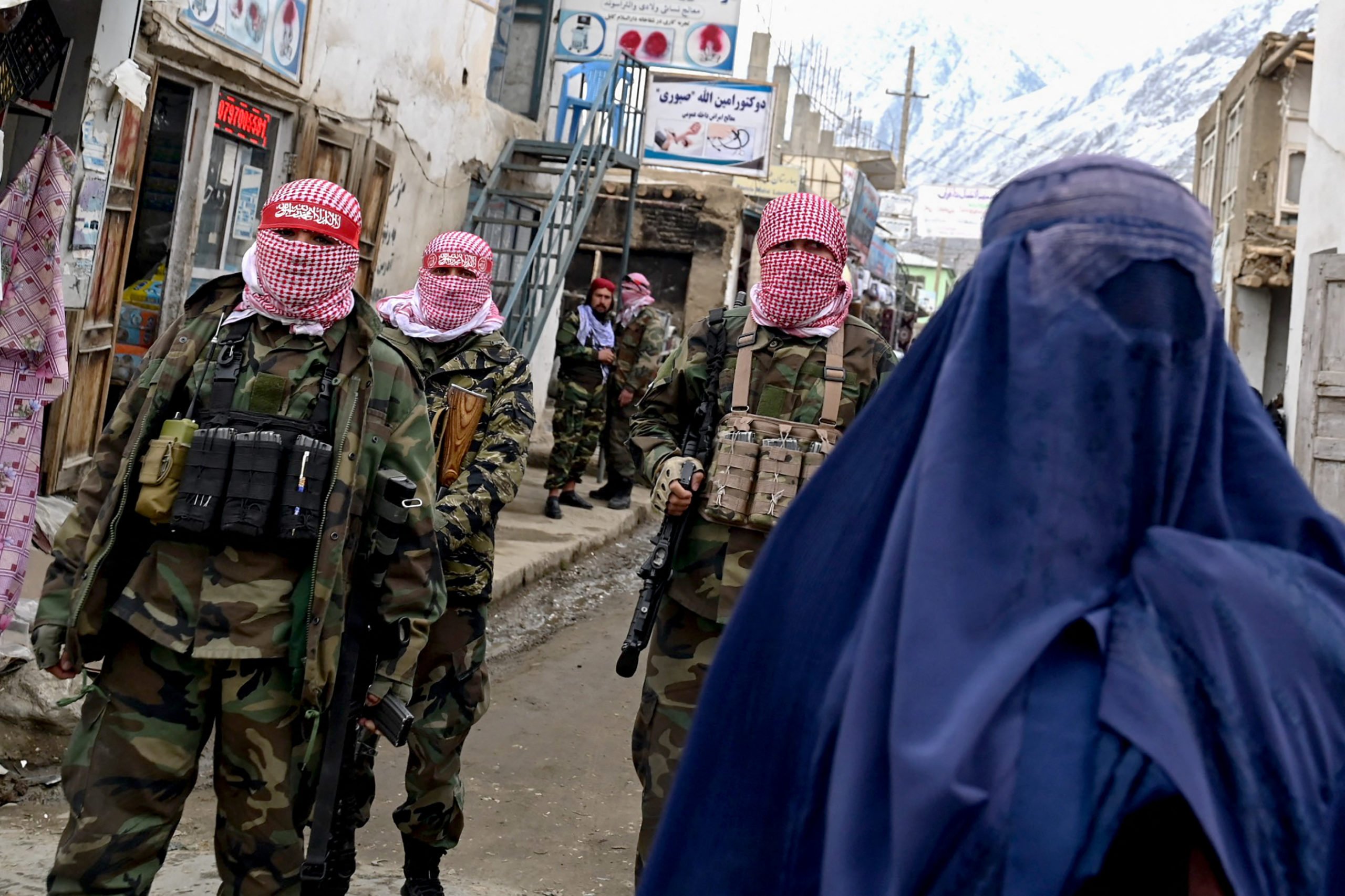As the third anniversary of the Biden administration’s withdrawal from Afghanistan approaches, the region is starting to look as it did prior to 9/11 and the U.S.’ 20-year intervention, according to multiple reports and former U.S. officials who spoke to the Daily Caller News Foundation.
The U.S lost thousands of soldiers and spent trillions of dollars during the 20-year war to combat terrorism in Afghanistan in response to the 9/11 terrorist attacks, according to The Council on Foreign Relations (CFR) and ABC News. The Biden administration withdrew U.S. forces from Afghanistan in August 2021 — in what was widely considered a disastrous operation — and the situation in the region reverted to pre-war conditions, as the Taliban established an iron rule and Al-Qaeda began recovering, despite the Biden administration’s promise that such a scenario would not happen, according to several reports and ex-U.S. officials who spoke to the DCNF. (RELATED: Iranian Gov’t Agents Have Provided ‘Financial Support’ To Gaza Protesters, US Intel Chief Says)
“Afghanistan has not returned to a pre 9/11 state — in many ways, it is much worse now, as our disastrous withdrawal has fueled a new global enthusiasm for Islamic extremism,” former Deputy Assistant Secretary of Defense for the Middle East Simone Ledeen told the DCNF. “The Biden administration’s denials about the real and growing threat from Afghanistan are consistent with their reality-denying assertions that their withdrawal was a success and that no American service members have been killed on their watch (a false assertion President Joe Biden made in June). The warning lights are flashing red.”
Over 2,312 U.S. military serviceman died in Afghanistan. That total includes 2,218 service members who died during the original combat mission that began in 2001 under then-President George W. Bush, and the over 100 service members who died following the creation of the training mission, known as Operation Freedom’s Sentinel in 2014, during the Obama, Trump and Biden administrations, according to ABC News.
Following then-President Barack Obama’s troop surge in 2009, 1,534 Americans died in the country between that year and 2012. In total, there were over 20,066 American service members who were wounded in action during the 20-year war, ABC News reported.
After taking office in 2017, former President Donald Trump’s administration eventually reached a settlement in 2020 to start withdrawing more troops so long as the militia didn’t use Afghanistan for terror-related activities and abided by strict guidelines, according to CFR.
President Joe Biden withdrew the remaining U.S. forces in Afghanistan in August 2021, in a chaotic weeks-long effort that ended in the deaths of 13 servicemembers at the Kabul airport.
From 2001 to 2021, the U.S. spent over $2 trillion on humanitarian and military efforts in Afghanistan, according to the Watson Institute of International and Public Affairs at Brown University. The U.S. left behind over $7 billion worth of military equipment in 2021, and the Taliban seized control over the region in the days following the withdrawal.

KABUL, AFGHANISTAN – AUGUST 25: (Photo by New Zealand Defence Force via Getty Images)
The Taliban made several promises about how it would govern once the Biden administration withdrew U.S. forces, including guaranteeing the rights of women, refusing to work with Al-Qaeda and working to bolster the region’s economy, according to the BBC. The Taliban took control of Afghanistan within days of the U.S. withdrawal, stamping out the U.S.-trained Afghan militia.
“All the evidence – remember what I said about Afghanistan? I said that Al-Qaeda wouldn’t be there. I said we would get help from the Taliban,” Biden told reporters in mid-2023. “What is happening now? What’s going on? Read your press. I was right.”
Afghanistan After The American Withdrawal
Women have had their rights stripped by the Taliban since the U.S. withdrew in 2021; Afghanistan ranked last in 2023’s Women Peace and Security Index. The Taliban has barred women from attending university and school beyond sixth grade, as well as working in governmental roles, according to the BBC. Simple activities such as walking in a park or playing sports are obstacles for women in the region.
Opium production has dropped considerably, but not to zero, according to a 2023 United Nations report. After the U.S. withdrawal, a humanitarian crisis swept over Afghanistan, with the Taliban failing to ensure the availability of even basic services for the population, according to The Heritage Foundation.

TOPSHOT – Afghan burqa-clad women walk past a Taliban security personnel along a street in Jalalabad on April 30, 2023. (Photo by Shafiullah KAKAR / AFP) (Photo by SHAFIULLAH KAKAR/AFP via Getty Images)
“Afghanistan went into a massive famine the moment that we withdrew. It is the responsibility of the government to provide for their people, not us,” Gabriel Noronha, a former State Department official, told the DCNF, noting that there are “split views” among experts as to what the U.S. role in delivering assistance to Afghanistan is in the current state.
Despite Biden’s promise that Al-Qaeda, the terrorist group responsible for the 9/11 attacks, would not recover or return to Afghanistan, the group has indeed begun operating in the region again, among other terror networks such as ISIS-K, according to multiple reports. The Taliban and Al-Qaeda’s “relationship remains strong” and the terror group “continues to pose a threat to the region, and beyond,” a Congressional Research Services report from May stated.
“The Taliban and Al-Qaeda maintain a close relationship that has not changed since pre-9/11 days,” Ledeen told the DCNF. “In Afghanistan, there are multiple different terrorist organizations training, planning and, in some cases, networking with each other.”

TOPSHOT – Afghan Taliban militants and villagers attend a gathering in the Alingar district of Laghman Province on March 2, 2020. (Photo by NOORULLAH SHIRZADA/AFP via Getty Images)
Al-Qaeda has built at least eight new training camps since August 2021 and enjoys access to a network of safe houses throughout Afghanistan, according to a United Nations national security report from February, as obtained by CBS News. The terrorist group also runs multiple religious schools, where they teach and train children to become militants, according to the report.
Al-Qaeda began making millions of dollars per week from gold mines in northern Afghanistan, according to an investigation by a U.K.-based threat analysis firm, as obtained by Foreign Policy in March. Some of the profits from the mines go “directly into the pockets of top-ranking Taliban officials and their personal networks,” the report says, quoting from on-the-ground sources.
“You certainly have a massive accumulation of ISIS and Al-Qaeda present in Afghanistan,” Noronha told the DCNF.
Despite the group’s resurgence, it is currently incapable of carrying out attacks on a similar scale to September 11, according to the CRS report. A State Department spokesperson told the DCNF that the U.S.’ greatest interest in Afghanistan is ensuring “that the country can never again be a launching pad for terrorist attacks against the United States,” noting that there is “no clear indication Al-Qaeda is actively rebuilding an operational capability.”

TOPSHOT – Taliban security personnel stand guard as an Afghan burqa-clad woman (R) walks along a street at a market in the Baharak district of Badakhshan province on February 26, 2024. (Photo by WAKIL KOHSAR/AFP via Getty Images)
“I am a little skeptical of arguments that Al-Qaeda is sort of fully operational again,” Michael DiMino, a Defense Priorities fellow and former CIA official, told the DCNF, pointing to the damage the group sustained during the 20-year war. “These groups are threats. We have to keep an eye on them… but the idea that we’re going to miss some sort of explosion in activity — I’m not buying that without more indicators.”
To try to quell some of the issues plaguing the Afghani people under the Taliban’s rule, the Biden administration has provided approximately $2.8 billion in humanitarian and development aid for the region since the withdrawal in 2021, according to the Special Inspector General For Afghanistan Reconstruction (SIGAR).
A previous SIGAR report found that U.S. international aid to Afghanistan is delivered through methods that run the risk of diversion to the Taliban or other extremist groups.
There is no indication that U.S. forces will return to the region anytime in the near future.
“There is zero U.S. strategy for Afghanistan. The government doesn’t have a game plan for how we want to address the region,” Noronha told the DCNF. “The mindset basically was, ‘Okay, we screwed this up. It’s got to be lost. We’re just going to pretend like it doesn’t exist anymore.’ And that’s not healthy, when they have certainly failed to conduct over-the-horizon counterterror strikes.”
“The political reality is, there will never be like a U.S. troop residence in Afghanistan for 100 years,” Noronha said.
The Pentagon and White House did not immediately respond to a request for comment.
Editor’s Note: This story has been updated to reflect the total number of U.S. casualties during the 20-year war in Afghanistan.
All content created by the Daily Caller News Foundation, an independent and nonpartisan newswire service, is available without charge to any legitimate news publisher that can provide a large audience. All republished articles must include our logo, our reporter’s byline and their DCNF affiliation. For any questions about our guidelines or partnering with us, please contact licensing@dailycallernewsfoundation.org.



